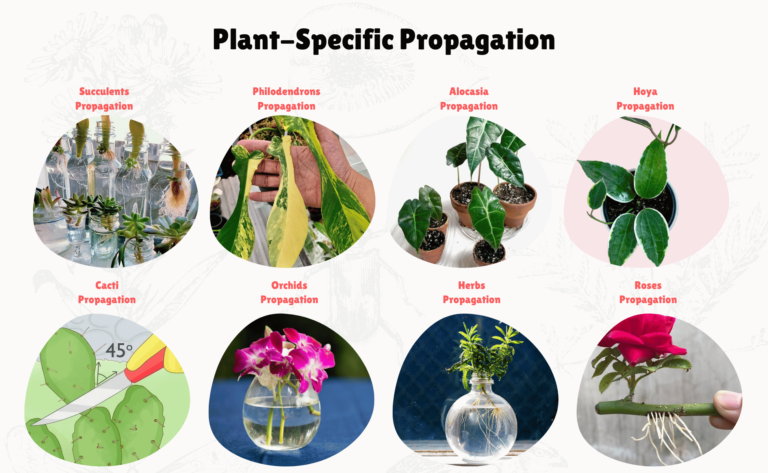Elegans: Insights into Advanced Genetic Research
Caenorhabditis elegans is a tiny, transparent roundworm that scientists use to study how animals grow, develop, and behave. This simple organism lives in soil and eats microbes, but it has helped us better understand genetics, diseases, and how living things work on a cellular level.
Its body is only about 1 millimeter long, but it has a nervous system, muscles, and even a simple gut. This makes it a valuable model for many biology experiments.

What makes C. elegans stand out is its transparent body, which lets me watch its cells and organs in action under a microscope. The worm’s entire development, from a single egg to a full adult, has been mapped out in amazing detail.
Researchers picked C. elegans as a model organism because it is simple to handle in the lab, has a short lifecycle, and allows us to easily add or change genes to explore important questions in biology.
Overview of Elegans

I am examining Caenorhabditis elegans, a widely studied nematode used in research. Its size, short life cycle, and unique genetic traits make it valuable for scientific work in genetics and developmental biology.
Definition and Background
Caenorhabditis elegans, often called C. elegans, is a small, transparent roundworm about 1 mm long. It lives in soil, feeding on bacteria.
In laboratories, it is typically raised on a diet of E. coli. The organism is non-parasitic and is found in many environments worldwide.
This nematode completes its life cycle quickly. At 25°C, it develops from a fertilized egg, passes through four larval stages, and becomes an adult in about 2.5 days.
One reason I find it easy to work with is its ability to produce large numbers of offspring, making it practical for genetic studies. To learn more about its biology, I recommend reading the ScienceDirect overview of C. elegans.
Key Features:
- Size: ~1 mm
- Diet: Bacteria
- Life cycle length: ~3 days
- Habitat: Soil
Historical Significance
In 1965, Sydney Brenner chose C. elegans to study how animals develop and behave. His decision changed genetic and developmental biology research.
Before C. elegans, few animals were easy to study at the genetic level. This nematode’s simple body plan, clear anatomy, and well-defined cell lineage enabled pioneering research.
I appreciate how C. elegans has contributed to major discoveries. Work with this organism led to insights into cell division, gene function, and even RNA interference.
Several Nobel Prizes have been awarded to scientists for findings using C. elegans. Its short life cycle and ability to generate many offspring make genetic experiments efficient and reliable.
For a detailed historical background, I suggest reading the NCBI Bookshelf entry on C. elegans.
Scientific Importance

I see that Caenorhabditis elegans, often called C. elegans, has unique qualities that have shaped modern biology research. Its simple body structure and genetic similarities to humans make it an excellent model for medical and genetic studies.
Role in Biological Research
I use C. elegans in research because it is easy to grow, transparent, and has a quick life cycle. These traits help me follow cell development and organ formation in real time.
Because of its small size and well-mapped nervous system, I can study complex processes such as learning, behavior, and aging. C. elegans has become a foundation for many experiments in genetics, cell biology, and neuroscience.
Labs worldwide rely on it since it lets me test thousands of genetic changes quickly and at a low cost. This has allowed researchers to move forward with less dependence on mammals, making research more ethical and cost-effective, as noted in drug discovery and reduction in animal use in laboratory research.
Notable Discoveries Involving Elegans
I have found that some of the most important biological discoveries began with C. elegans. For example, scientists used it to unlock the secrets of programmed cell death (apoptosis).
This helped explain how bodies remove unneeded or damaged cells. Research with C. elegans also laid the groundwork for studying RNA interference, a process that controls how genes are turned on or off.
The simple structure of its nervous system has helped in breakthroughs in understanding how neurons grow and connect. Using C. elegans, I can see how Alzheimer’s-related genes, like presenilin, work in living tissues, offering insight into human diseases.
Genetic Studies and Applications
I value C. elegans because its genome is fully sequenced and shares many genes with humans. This similarity lets me study human disease genes in a simple organism, revealing how changes in DNA can lead to illness.
C. elegans contains hundreds of genes highly similar to those that cause medical conditions in people. Its transparency allows me to track genetic changes under a microscope, observing how specific genes affect health and development.
Scientists commonly use C. elegans to model human disease and find new treatments. This worm’s ability to help uncover how genes shape disease is one reason it remains vital to biomedicine.
Elegans in Modern Research
I study Caenorhabditis elegans because its biological features and genetic tools make it uniquely valuable for research. This small nematode helps me explore fundamental processes, disease models, and drug discovery with efficiency and precision.
Current Research Focus
My research with C. elegans often centers on aging, genetics, and disease modeling. I can use this organism to study the effects of specific genes on lifespan and cellular health because its full genome is mapped.
A major strength is its ability to mimic aspects of human biology. For example, I can observe how nerve cells develop, respond to toxins, or degenerate, which is crucial in understanding conditions like Alzheimer’s or Parkinson’s disease as discussed here.
I also investigate drug effects and toxicology. The transparency and small size of these worms let me monitor cell changes in real time.
Their rapid life cycle and simple body plan enable me to run experiments quickly and cost-effectively. C. elegans is now used widely to examine gene-environment interactions, metabolism, and microbiome effects in a living animal.
These features explain why the worm remains a top choice as a biomedical model.
Technological Advancements
In my lab, I benefit from several innovations that make C. elegans research easier and more insightful. Automated imaging systems let me track worm movement, growth, or fluorescence markers across thousands of samples, allowing for large-scale analysis in a short time.
I also take advantage of high-throughput screening methods using 96-well microplates to test many drugs or conditions at once which is enabled by their production and handling advantages. Gene editing techniques, like CRISPR-Cas9, allow me to change any gene, helping me understand its function directly.
I can insert fluorescent proteins to watch where specific proteins go inside living worms. Advances in microfluidics now let me work with single worms or cells, improving my ability to study tiny details.
The tools I use make C. elegans a flexible model for many types of experiments and drive new discoveries each year.
Frequently Asked Questions
I often come across questions about Caenorhabditis elegans, including its basic biology, why it is used in science, and its role in research. The answers below reflect the most common topics I address, from its life cycle and reproduction to its advantages and limitations in laboratories.
What is the common name for Caenorhabditis elegans?
The common name for Caenorhabditis elegans is simply “C. elegans.” I sometimes refer to it as a type of small roundworm or nematode.
Why is Caenorhabditis elegans considered an effective model organism for research?
I find C. elegans valuable for research because it has a simple structure and transparent body, making it easy to observe under a microscope. Its genome is fully mapped, and it reproduces quickly, allowing me to study genes, cells, and development in detail.
More about the benefits of research with this worm can be found through scientific discussions of C. elegans.
How does Caenorhabditis elegans reproduction take place?
C. elegans can reproduce by self-fertilization because most individuals are hermaphrodites, meaning they produce both eggs and sperm. Males are rare but can mate with hermaphrodites for increased genetic diversity.
What are the key advantages and disadvantages of using Caenorhabditis elegans in laboratory studies?
Some clear advantages for me include low maintenance costs, a short lifespan, and genetic simplicity. It is easy to keep large populations and track genetic traits.
But, I also note disadvantages: findings may not always apply directly to more complex animals because C. elegans has a simple nervous system and physiology. For more on technical details, see C. elegans FAQs from NBRP.
What areas of research most commonly involve Caenorhabditis elegans?
I use C. elegans in many fields such as genetics, neuroscience, developmental biology, and aging. It is also used to study cell death, gene function, and the effects of drugs on living organisms.
Can you describe the lifecycle of Caenorhabditis elegans?
The lifecycle starts with the egg, then moves through four larval stages called L1 to L4, and finally becomes an adult. At standard lab temperatures, I see an entire lifecycle complete in about three days.
Each developmental stage has a specific number of cells, which makes studying growth straightforward. Information about the cell stages in C. elegans can be found in this basic knowledge discussion.




